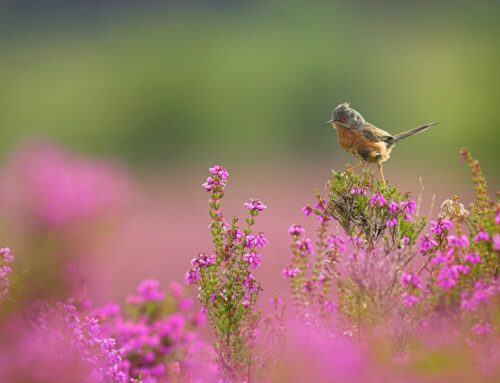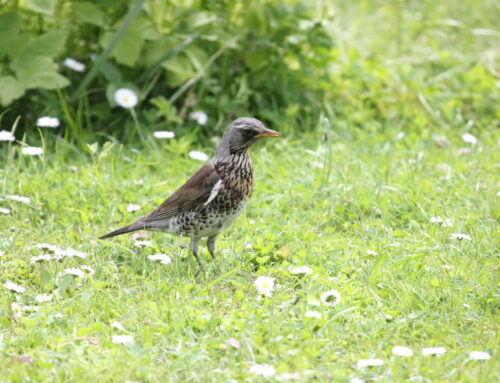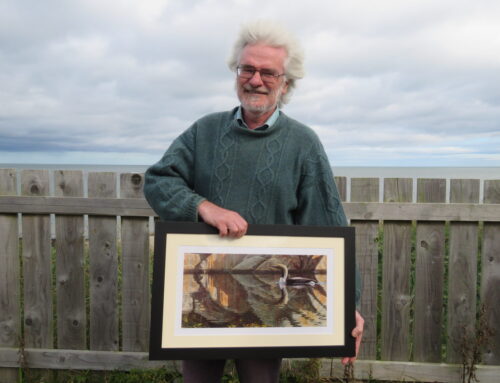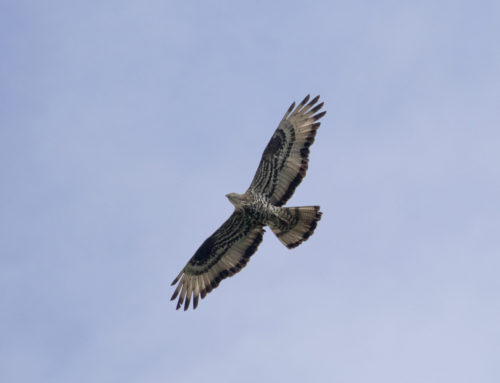60 years of monitoring Slavonian Grebes
A recent paper by Stuart Benn, Malcolm Harvey and Steven Ewing, “A history of breeding Slavonian Grebes in Britain” (British Birds 2023, 116: 308-319), gives a fascinating account of the fortunes of this species since its colonisation of northern Scottish lochs in the early 1900s. The authors pieced the story together from historical records and, from 1971 onwards, the annual monitoring that has provided the longest-running and most complete dataset of any British breeding bird.
At their peak in 1980, there were 80 pairs of Slavonian Grebes breeding in Scotland, and numbers remained high from the 1970s through to the mid 1990s. Thereafter, numbers declined steadily, with only 20 pairs in 2021. As Benn et al. pointed out, Slavonian Grebes appear to be relatively catholic in their choice of breeding sites, with successful breeding having been recorded on 66 lochs, so it seems unlikely that conditions on breeding sites have driven a decline. Slavonian Grebe productivity on Scottish lochs is low, and it seems that immigration of birds from Iceland is necessary to maintain the Scottish population; numbers breeding in Scotland annually may be determined by winter survival and levels of immigration and emigration.
The remarkable dataset that underpins our knowledge on Slavonian Grebes in Scotland comes from monitoring by generations of ornithologists, both professionals and volunteers, and here Stuart Benn celebrates these efforts – in particular those of Malcolm Harvey, which have spanned an amazing 60 years!

Malcolm Harvey; photo Stuart Benn
With a winning combination of rarity, beauty and endearing behaviour, Slavonian Grebes have drawn admirers to their Highland breeding lochs since they first colonised in 1908. However, formal monitoring didn’t really begin until the 1950s when Cecily Knowles and Maeve Rusk started checking some of the Inverness-shire sites. From the mid-60s, the baton was passed to Malcolm Harvey and Roy Dennis and they were the first to set out to survey the entire population every year through their own efforts and coordinating others. Many have come and gone since then but the enterprise continues to this day and, save for the 2020 Covid hiatus which affected so much, now constitutes the longest running and most complete census of any British breeding bird.
Remarkably, Malcolm is still involved in Slavonian Grebe monitoring and whilst he isn’t as mobile as he once was he is able to check some of the more accessible lochs, continuing a commitment now spanning close on 60 years! Even more remarkably, for the bulk of that time Malcolm undertook all his monitoring during evenings, weekends and holidays away from his real job working as a civil servant – few can have put in such a shift.

Slavonian Grebe; Stuart Benn
Of course, behind every species account in the RBBP report sits masses of data each with its own story – all of those thousands of observations from folk who have got out, seen something and, most importantly, passed on the information. And whilst a good deal comes from professionals, our knowledge would be far poorer if not for the invaluable contribution of volunteers, some active for decades, others just starting but all worthy of recognition.
It is only from such collective efforts that we have been able to follow the fortunes of the Slavs through all their ups and downs. Fortunately, similar long-term studies in Iceland and Norway have allowed us to put our population changes into a wider context and to analyse linkages between all these areas and the factors that may be influencing them individually and collectively.
As with every other species, Slavonian Grebes will have many challenges to face in the future and it is only through continued monitoring that we’ll be able to gauge how they’re doing and take whatever steps we can to turn things round if needed. This will require a concerted effort both here and abroad and between professionals and volunteers, and, hopefully, Malcolm too for a good few years yet!






